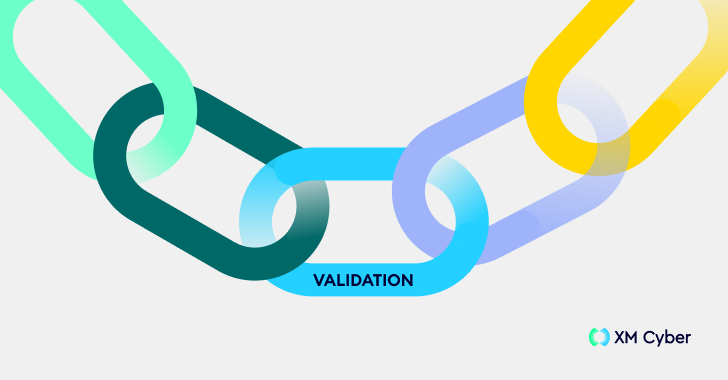One (Very Important) Part of a Complete CTEM Framework – OfficialSarkar
The last few years have seen more than a few new categories of security solutions arise in hopes of stemming a never-ending tidal wave of risks. One of these categories is Automated Security Validation (ASV), which provides the attacker’s perspective of exposures and equips security teams to continuously validate exposures, security measures, and remediation at scale. ASV is an important element of any cybersecurity strategy and by providing a clearer picture of potential vulnerabilities and exposures in the organization, security teams can identify weaknesses before they can be exploited.
However, relying solely on ASV can be limiting. In this article, we’ll take a look into how combining the detailed vulnerability insights from ASV with the broader threat landscape analysis provided by the Continuous Threat Exposure Management Framework (CTEM) can empower your security teams to make more informed decisions and allocate resources effectively. (Want to learn more about CTEM? Check out this thorough guide to getting started with CTEM.)
Backgrounder: ASV Delivers a Comprehensive View
ASV is a critical element of any modern cybersecurity program. It can block high-impact attacks, by using validation to filter exposures that don’t compromise your critical assets and to verify remediation that reduces risk. It can also increase efficiency by automatically verifying that security controls are configured correctly, which saves time on analyzing and remediating low-risk exposures. And it optimizes effectiveness by ensuring your investment in security tools is effective in blocking cyber-attacks and complying with policies and regulations. (Pssst, XM Cyber was just named “the undisputed leader” in Frost & Sullivan’s 2024 ASV Radar Report – want to learn why? Read the report here!)
By automating the validation process, you can reduce the reliance on manual testing, saving time and resources while increasing accuracy and coverage. Taking a proactive approach like this enables organizations to detect and remediate security gaps, maintaining protection against emerging threats.
Moreover:
- ASV provides a comprehensive view. Traditional security methods can miss hidden assets or fail to account for vulnerabilities hiding in user accounts or security policies. ASV eliminates these blind spots by conducting a complete inventory, which allows security teams to address weaknesses before attackers can leverage them.
- ASV goes beyond simple discovery. ASV solutions analyze the vulnerabilities within each asset and prioritize them based on their potential impact on critical assets. This empowers security teams to focus their efforts on the most pressing threats.
- ASV is super-scalable. ASV’s scalability makes it suitable for organizations of all sizes. For smaller teams, ASV automates time-consuming tasks associated with asset discovery and vulnerability assessment, freeing scarce resources for other activities. For large enterprises, ASV offers the necessary scale to effectively manage their constantly-expanding attack surface.
- ASV aligns with regulatory frameworks. Initiatives like the Cybersecurity Maturity Model Certification (CMMC), the National and Information Security (NIS2) Directive, and the General Data Protection Regulation (GDPR) all advocate for ongoing validation of an organization’s security posture. Implementing an ASV solution demonstrates efforts towards compliance with these and other frameworks.
And Yet…ASV on its Own isn’t Sufficient
Attack Surface Validation is a robust solution that provides a comprehensive view of an organization’s attack surface, prioritizes vulnerabilities based on risk, and automates tasks for improved efficiency. It’s a valuable tool, but it is not sufficient on its own as the basis for a complete and effective cybersecurity strategy. It does hone in on certain risks, but doesn’t necessarily give you the full picture of your security status.
Without checking out your attack surface and identifying the vulnerabilities that could harm your organization, relying on ASV alone can leave security teams in the dark. Plus, some ASV tools used in live settings can jeopardize business operations or give cybercriminals a way in later on. This is why its integration into a broader framework – like the Continuous Threat Exposure Management (CTEM) framework – is essential to maximize benefits and mitigate potential limitations.
How ASV Fits into CTEM
Since its inception in 2022, the Continuous Threat Exposure Management (CTEM) framework has proven to be a highly effective strategy for mitigating risks and enhancing security posture. Unlike other siloed approaches, CTEM offers a proactive cybersecurity strategy that transcends mere vulnerability identification. Comprising five interconnected stages – scoping, discovery, prioritization, validation (yup, that’s where ASV “lives”), and mobilization – CTEM continually identifies and prioritizes threats to your business, empowering Security and IT teams to mobilize around the issues with the greatest impact and fix those first.
By leveraging the capabilities of ASV to deliver on the 4th step of the CTEM framework, organizations can understand how attacks can occur and the likelihood of their occurrence. And all importantly, by pairing it with the exposure assessment that takes place in CTEM’s 3rd step (you can read all about this 3rd step of CTEM, prioritization, here) high-impact exposures can be identified and addressed in the most efficient way.
ASV combined with exposure assessment capabilities helps organizations block high-impact attacks and gain remediation efficiency that, on its own, it just can’t deliver.
ASV – Putting the “V” in CTEM’s 4th Step, Validation
This broader perspective offered by CTEM complements ASV’s strengths and enables more accurate threat prioritization, more efficient remediation, and a stronger overall security posture. ASV is simply more valuable and reliable when integrated with comprehensive discovery, assessment, and prioritization of vulnerabilities and exposures across the hybrid environment.
Integrating ASV into CTEM allows organizations to leverage the strengths of both approaches. Together, they enable security teams to make informed decisions, allocate resources effectively, and reduce the overall risk to the organization. The combination of ASV with CTEM allows organizations to achieve a more comprehensive, proactive, and effective approach to managing cyber risks.
You may be interested in the series on the 5 Stages of CTEM. In this blog series, we provide a complete understanding of each stage so organizations can tailor the adoption of CTEM to their needs and goals:
Source: TheHackerNews
